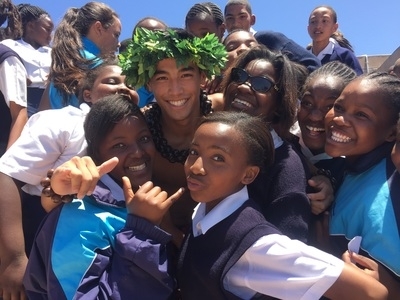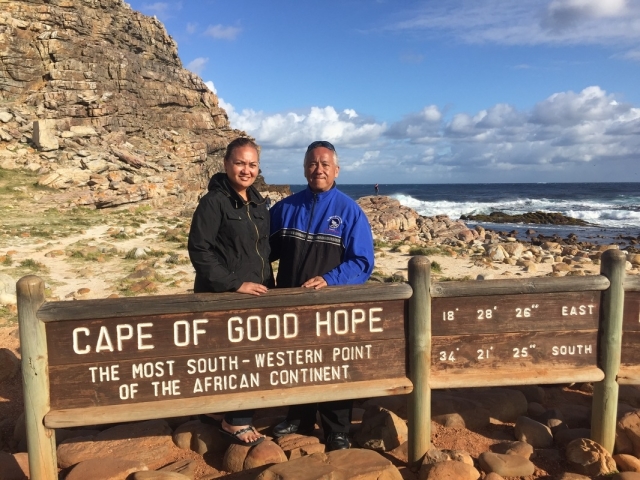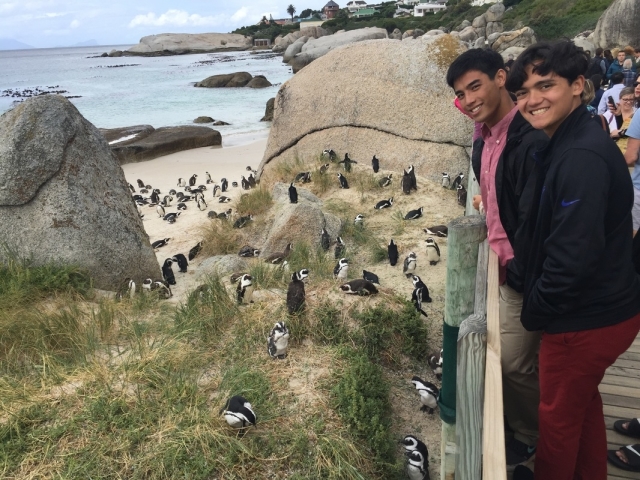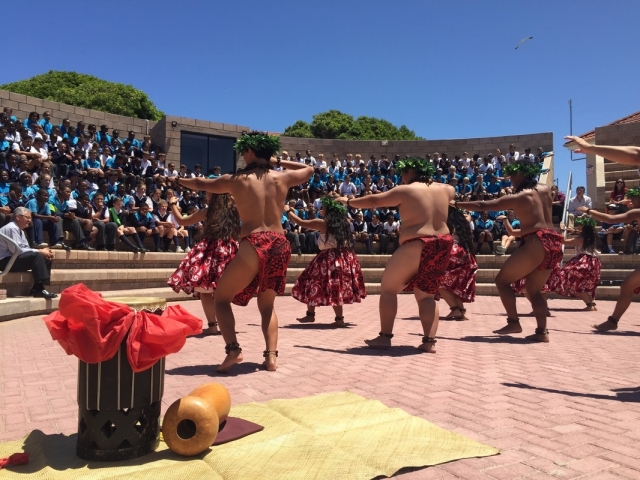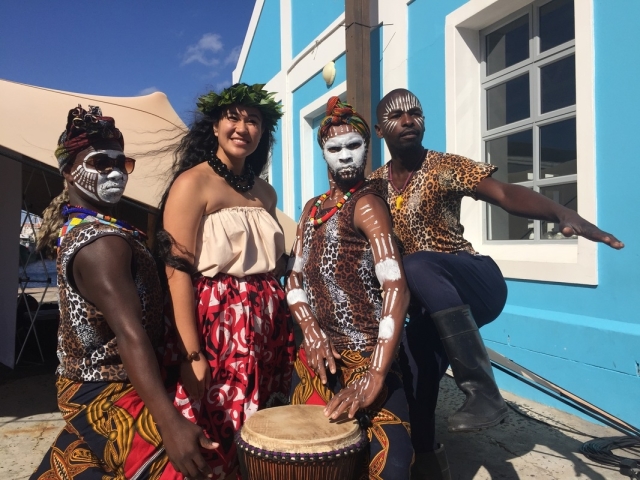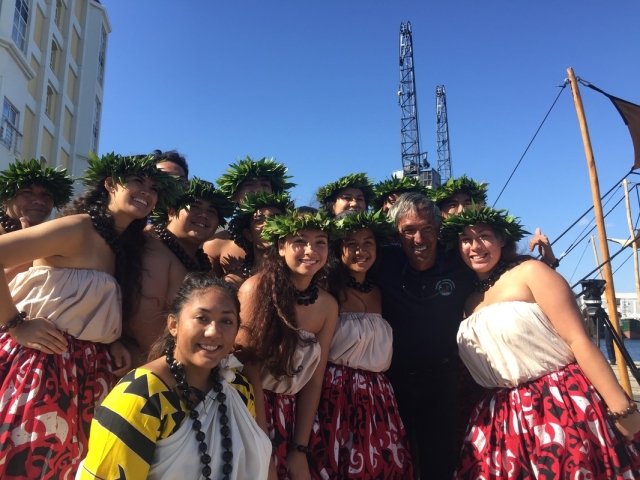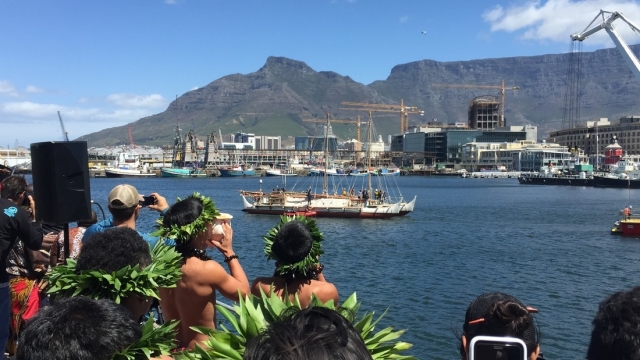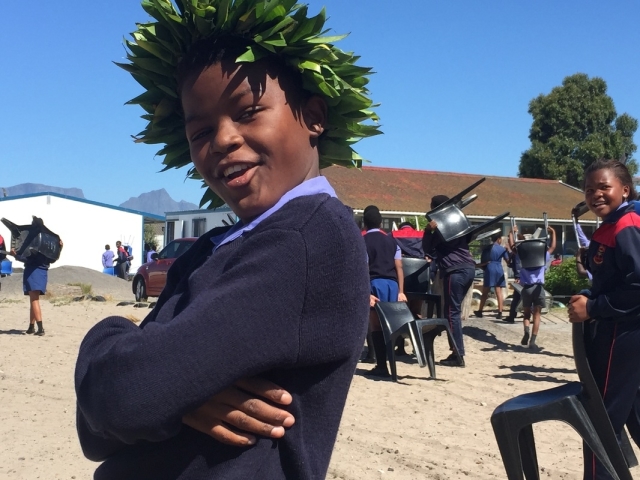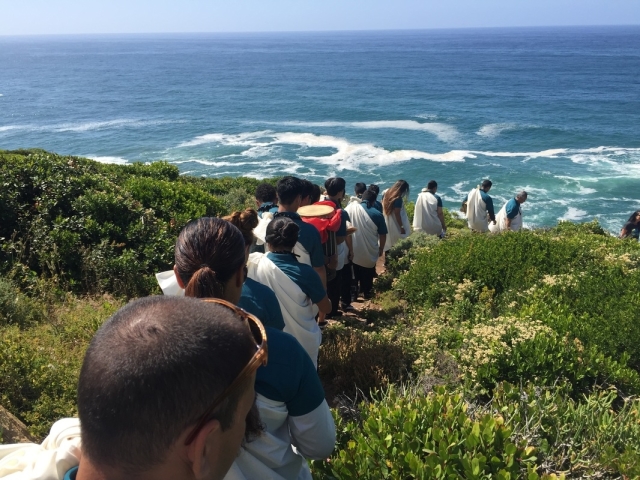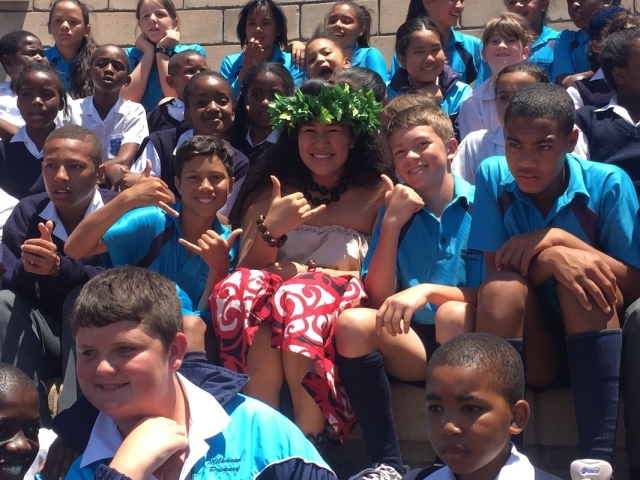
Hawaiʻi Students Provide Virtual Study Tour of South Africa
South Africa, current stop of the Mālama Honua Worldwide Voyage, is literally half a world away from Hawaiʻi. And while a delegation of Hawaiian educators and students are enjoying the field trip of a lifetime there, the students have adopted a novel concept making Africa accessible to their classmates and families back home. They are posting daily reflections of their trip online creating a virtual study tour to share with learning communities in Hawaii and throughout the world.
Ke Kā o Makaliʻi (The Canoe Bailer of Makaliʻi) is the name of a star line that is about to rise in the night sky above Hawaiʻi as well as South Africa. This is also the name of a youth delegation of eight Kamehameha Schools Kapālama students and four Hālau Kū Māna Charter School students currently visiting Cape Town through November 23. The students helped in the historic welcoming ceremonies for Hōkūleʻa last week and are currently engaging in cultural and educational exchanges, and participating in local service projects.
 Kamehameha Schools is an education sponsor of the Mālama Honua Worldwide Voyage, and Hālau Kū Māna is one of many outstanding charter schools that excel at culture-based learning. Together both schools support the voyage and its goals to promote ancestral wisdom, care for the world’s oceans and grow global sustainability. To prepare for this journey to a destination literally on the other side of the world, students have been rehearsing oli, mele and hula, and have been studying two main themes:
Kamehameha Schools is an education sponsor of the Mālama Honua Worldwide Voyage, and Hālau Kū Māna is one of many outstanding charter schools that excel at culture-based learning. Together both schools support the voyage and its goals to promote ancestral wisdom, care for the world’s oceans and grow global sustainability. To prepare for this journey to a destination literally on the other side of the world, students have been rehearsing oli, mele and hula, and have been studying two main themes:
Students have researched the late President Nelson Mandela, Archbishop Desmond Mpilo Tutu (who sailed on Hōkūleʻa and is hosting the Hawaiʻi delegation), and segregation during the Apartheid Era. At the same time, they are reflecting on the ideas of culture/language oppression and revitalization in Hawaiʻi’s history, the illegal overthrow of the Hawaiian Kingdom, as well as the hopeful prospect of self-determination.
Pinnacle Point Cave in Mossel Bay is a site where the earliest evidence of human life was discovered by world renowned archaeologist Dr. Peter Nilssen. The coastal region provided extensive seafood resources, rich in Omega-3, that accelerated brain development. This resulted in the invention of tools, practice of rituals, and eventually movement outward to populate the entire planet beginning some 170,000 years ago – far earlier than previously thought. The San Bushmen today are the direct genetic descendants of these early humans. In addition to the scientific significance, students are reflecting on their own traditions of creation as found in the Kumulipo, as well as stories of Kāne, Kiʻi, Laʻilaʻi, Wākea, Papa, Hāloa and so forth.
Please join this group on their virtual study tour to Cape Town and Mossel Bay, South Africa by visiting daily at: KSHKM.weebly.com

